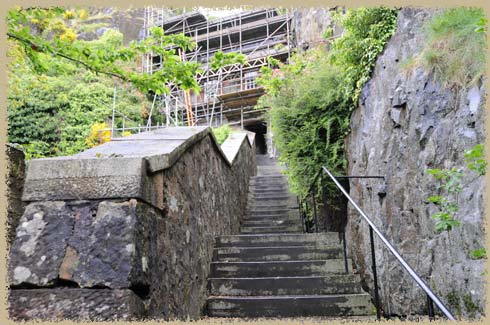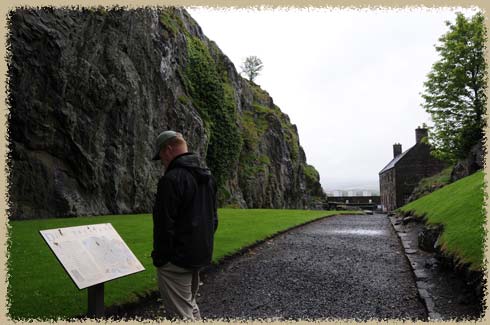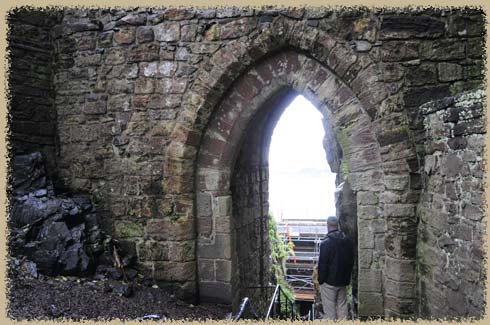Dumbarton Castle
Five hundred steps. Over five hundred. And not even a really cool ruin at the top, to be honest. The "ruin" here is mostly an 18th and 19th century military installation, very little remains of anything prior to that.

stairs and more stairs and...well, you get the picture
Hilltop fortress
When I saw the enormous volcanic hill, towering over the river the Clyde, I was really excited to see a very cool, massive castle -- the site was ideally suited to a fortress, and has been occupied as a defensive and offensive position since the iron age. I was quite disappointed, really. The views are spectacular, of course, but otherwise, it was a long climb. The entrance gatehouse is from the 14th century, and is restored as a museum and visitor center.
The first mention of a fortress here is from 450, as a fortress of the Kings of Strathclyde, and it plays a part in battles with the Picts during the 9th century. Vikings attacked the castle in 870 and captured it when the well dried up after a four month seige. No remains from this period exist--the eastern portion of the rock (caleld "The Beak") were probably inhabited as a town, while the western point had a wooden or stone castle.

walking along the bottom of the volcanic hill, towards the gatehouse
The castle became a royal castle (and Dunbarton a royal burgh). William Wallace was held here before being takent o England in 1305. King David II and his wife, Joan, stayed here in 1355. THe castle was beseiged by James IV in 1489, and James VI managed ot take the castle on his second try.
There is no wall around the whole site - the cliffs are steep enough it wasn't considered necessary to entirely wall-in the fortress. Since it survived seiges a dozen times or more, the decision was apparently a good one. The highest part of the hill has the remains of teh White Tower, a 7m round foundation. The date for the tower is unknown, but it is a small and rather thin-walled, so it is clear that it was not the earliest stone fortification on the site. The lower part of the hill has a large storage building, a magazine built in 1740. Sentry boxes and various military barracks remain on the site, dating from the last two centuries.

the pointed-arch of the origianl gate to the castle
Lower down on the hill is the medeival gatehouse and the Governmor's House, along with a number of cannon batteries.


